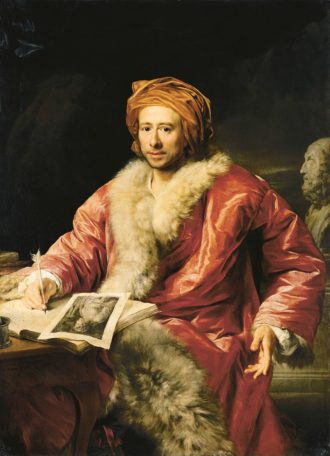
In a letter to a friend dated December 7, 1755 Johann Joachim Winckelmann, the father of archeology, described his first visit to Europe’s oldest public museum. “I’m living like an artist and as such I’ve been welcomed to places where young people are allowed to study. One such place is the Capitoline Museum,” he wrote. “Located here is the Treasure of Rome’s Antiquities and here one can stay as long as one wants from morning ‘til night.” He’d arrived in Rome three weeks earlier on a scholarship of 200 silver thalers granted by Augustus III the Strong, King of Poland and the Prince Elector of Saxony, to pursue his further studies in art, thanks to the success of his much-admired treatise, Gedanken über die Nachahmung der griechischen Werke der Malerei und Bildhauerkunst (Thoughts on the Imitation of Greek works in Painting and Sculpture), published earlier that year.
On display until April 22, in three locations: Palazzo Caffarelli, The groundfloor rooms in the left wing of Palazzo Nuovo, and the remaining rooms of Palazzo Nuovo of the same museum, is “Il Tesoro di Antichità. Winckelmann e il Museo Capitolino nella Roma del Settecento.” (“The Treasure of Antiquity. Winckelmann and the Capitoline Museum in 18th-Century Rome”). It’s one of three exhibitions to celebrate the 300th anniversary of Winckelmann’s birth on December 9, 1717 and the 250th anniversary of his death on June 8, 1768; the other two will be at the Winckelmann Gesellschaft (Society) in Stendal, northeastern Germany, his birthplace, which is reopening on May 23rd, and at the Vatican Museums, where he was Pope Clement XIII’s Prefect of Antiquities from 1763-68, on from June to October, its exact dates and title still to be decided. The Capitoline Museum’s three locations are divided into five sections: “Before the Capitoline Museum”, “To Promote the Magnificence and Splendor of Rome”, “The Treasure of Antiquity”, “Winckelmann and Rome” and “The Lost Layouts”. The aim of the exhibition is twofold.
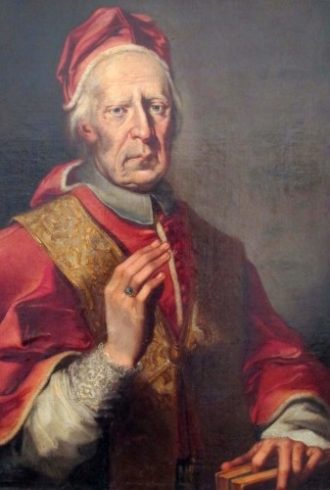
One is to recount the years leading up to December 1733’s founding of the Capitoline Museum desired by Pope Clement XII (r. 1730-40) in order not only to conserve but also to promote the magnificence and splendor of ancient Rome. The second is to present the Museum’s sculpture according to Winckelmann’s often ingenious, but not infallible, intuition. For example, he was the first scholar to determine the identity of the “Dying Gaul” until then considered “The Gladiator”. Thus the exhibit concerns not only Winckelmann’s life in Rome but a history of the Museum and the contribution of three popes: Clement XII, Benedict XIV (r. 1740-58), and Clement XIII (r. 1758-69), to its collections.
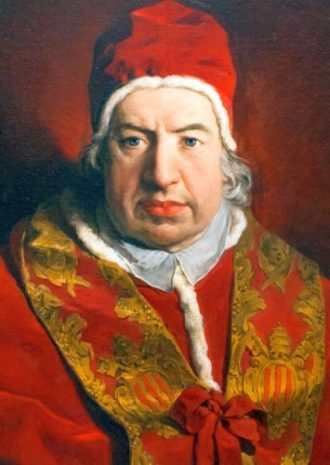
The Temple of Jupiter on the Capitol, the southernmost summit of the Capitoline Hill, was the center of the ancient Roman world. Reached by a zigzagging path up from the Forum, the temple was the scene of all the most sacred religious and political ceremonies. The hill and its temple came to symbolize Rome’s authority as caput mundi, head of the world, and the concept of a “capital” city is derived from the Capitol. Since the Middle Ages the Capitol or Campidoglio as it is called in Italian, has remained the seat of municipal government. The present arrangement of its buildings, two of which house the Capitoline Museum, dates from the 16th century: to 1536 when Pope Paul III (r. 1534-49) commissioned Michelangelo to design its beautiful square and dramatic flight of steps, the Cordonata, thereby turning its axis away from the Forum to face the Vatican, the Christian equivalent of the Capitol.
A collection of Classical statues has been kept on the Capitoline Hill since the Renaissance. Pope Sixtus IV gave the first group of bronzes to the city of Rome in 1471 and Sixtus V made more additions in 1586.
The first major collection to reach the hill, however, had belonged to Alessandro Albani, born in 1692 and appointed cardinal in 1721. Burdened by gambling debts in 1727 he was forced to sell 30 statues to Augustus III the Strong. The statues, together with two granite lions offered as a gift to the sovereign, reached Dresden in 1728; a few of the statues including the lions have returned to Rome for the first time to be displayed in “Il Tesoro di Antichità”). In order to avoid sales and keep the collection of still over 400 statues intact, in 1733 the Roman aristocrat, art and book collector Marquis Alessandro Gregorio Capponi (1683-1746), who left his magnificent library of some 40,00 volumes to the Vatican Library, advised Pope Clement XII to purchase it using lottery funds. The first artifacts arrived in the Campidoglio between 11 and 12 February 1734. The Museum opened to the public in the summer of 1735.

A wall panel tells us: “Benedict XIV added to the Capitoline Collections with numerous donations and fostered restoration work. He was responsible for the opening of the so-called Canopo (1748), a room in the Palazzo Nuovo dedicated to Egyptian style sculptures, as well as the founding of the Galleria dei Quadri (1748) and of the Accademia del Nudo (1754). His closest collaborator, Cardinal Silvio Valenti Gonzaga (1690-1756) was responsible for the edict issued in 1750 to defend the artistic and archeological heritage of the papal state…In 1765 Clement XIII purchased for the Capitoline Museum the famous grey-black marble Centauri and the Mosaic of the Doves, all three displayed here.
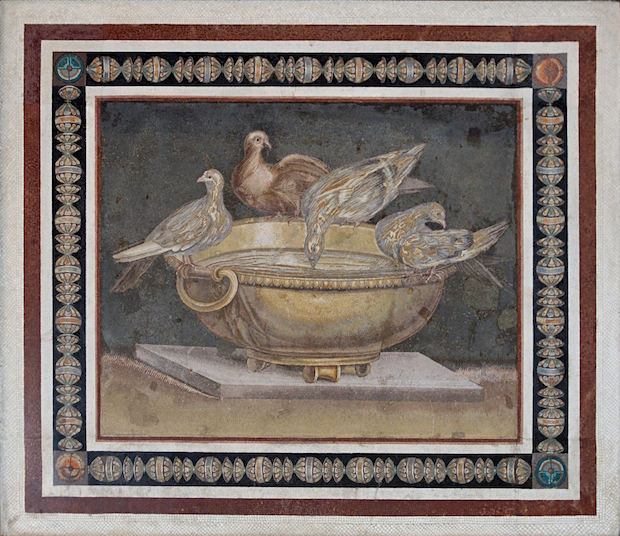
They’d been found at Hadrian’s Villa [in Tivoli] and transferred into the collection of Cardinal Giuseppe Alessandro Furietti (1685-1764) [before the Pope’s purchase]…With the opening by Clement XIV of the Museo Clementino in the Vatican in 1771, the interest and efforts of the popes were to be almost completely absorbed by the new museum institution [of ancient Greek and Roman sculpture].”
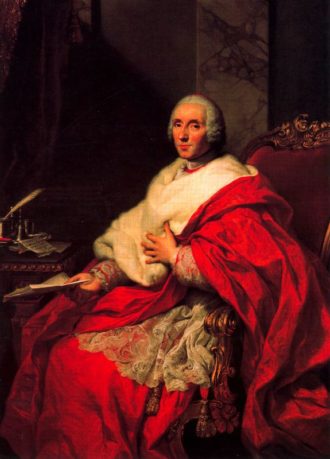
Had the papal nuncio and one of Winckelmann’s future employers in Rome, Alberico Archinto (1698-1758), not visited Nöthnitz in 1751, where Winckelmann was librarian to Count Heinrich von Bünau, he might never have come to Rome. Indeed, originally this cobbler’s son turned clever student and insatiable intellect had planned to stay in Italy two years, but the outbreak of the Seven Years’ War (1756-1763) changed his plans and caused him to stay for 13 years-until his love-tryst murder by the Tuscan-born unemployed cook/petty thief with a criminal record Francesco Arcangeli, convicted and soon after executed by breaking on the wheel, in Trieste, where Winckelmann is buried in the Cathedral of San Giusto’s graveyard.
In Rome he was named librarian first to Cardinal Domenico Silvio Passionei (1682-1761), “a well-known scholar with a keen antiquarian interest”, explains an exhibition wall panel, “who ensured Winckelmann unlimited access to his very well-stocked library of over 32,000 books in the hermitage of San Romauldo in Frascati,” and then to Cardinal Archinto. After their deaths, he was hired as librarian to Cardinal Alessandro Albani, with whom he had a complicated “friendship” for it was well-known even then that Winckelmann was gay. Albani’s collection in the Capitoline Museum, which Winckelmann described in his 1755 letter as “The Treasure of Antiquity”, made a decisive contribution to the writing of his second masterpiece, The History of Ancient Art, [the first clear comprehensive chronology of ancient sculpture from ancient Egypt, Etruria, and ancient Greece and immediate bestseller, published in Dresden in 1764, when he was still Albani’s librarian as well as Pope Clement XIII’s Prefect of Antiquities and Scriptor linguae teutonicae in the Vatican Library].” Its main topic is Greek art, whose superiority insisted Winckelmanm, who had a preference for statues of muscular nude males, was guaranteed by democracy and the status enjoyed by their artists. Moreover, though it may seem incredible, the layout of the Capitoline Museum has not changed very much from Winckelmann’s time. Hence a visitor to the exhibition follows in Winckelmann’s footsteps and can read his comments, printed out by the curators Eloisa Dodero and Claudio Parisi Presicce, on panels next to many of the sculptures still in the same place.

Another “close friend” was the painter Anton Raphael Mengs (1728-79) with whom Winckelmann lived in the artist’s apartment at Trinità dei Monti. Thanks to Mengs, “Winckelmann,” Wikipedia’s entry recounts, “devoted himself to the study of Roman antiquities and gradually acquired an unrivalled knowledge of ancient art. Winckelmann’s method of careful observation allowed him to identify Roman copies of Greek art, something that was unusual at that time-Roman culture was considered the ultimate achievement of Antiquity. His friend Mengs, [who was widely regarded as the greatest living painter of his day and with whom he planned a work never completed on the style of Greek artists] became the channel through which Winckelmann’s ideas were realized in art and spread around Europe.” Winckelmann assessed artistic style as a linear progression by period and place and by charting a civilization’s growth and decline. He was one of the most influential thinkers of the 18th century. He contributed significantly to Europe’s neoclassical period and to the idealistic embrace of Ancient Greece and Rome in fashion, décor, art, architecture and political thought.
Aside from the many sculptures on permanent display the highlights of Il Tesoro di Antichità’s 124 artifacts include: portraits of Mengs and of Winckelmann dressed with a fur-trimmed housecoat and elaborate red turban by Mengs’ brother-in-law Anton Von Maron, etchings of Rome by Piranesi, exquisite red chalk drawings of the Campidoglio by Robert Hubert, and a portrait of Pope Clement XIII by Pompeo Batoni, another friend of Winckelmann. Many artifacts are on loan from several other museums in Rome, the Louvre, the Rijksmuseum in Amsterdam, the Prado in Madrid, and the Getty in Los Angeles. Thanks to Winckelmann, who brought the past to life, the Grand Tour of Italy became a must for every aspiring cultured European and the Capitoline Museum the calling card of the Eternal City.












